The best 4x4s and off-road cars – driven, rated and ranked
Where we’re going, we don’t need roads: these high-riders are capable on just about any surface
News


by James Disdale and Jack Warrick
8 mins read
7 April 2025
Share
If you want to climb every mountain and ford every stream, a proper rough-and-tumble vehicle is exactly what you need.
The best 4x4s and off-roaders are genuinely capable, mud-plugging machines designed to tackle terrain that would make a mountain goat think twice.
But which is the best? The choices for the 4×4 class aren’t straightforward, because some prioritise off-road performance above all else and others are the consummate all-rounders, as happy bouncing over boulders as they are tearing along asphalt.
And that’s before you start getting bogged down (metaphorically, not literally) in the details about breakover angles, wading depths and axle articulation, not to mention locking differentials and low-range gear ratios.
In our eyes, there’s no better car for the job than the Land Rover Defender, which tackles off-road driving with genuine ease and with you in relative comfort.
Yet whatever your off-roading wants or needs, there’s something in our top 10 topography-tamers that should suit your requirements and budget.
1. Land Rover Defender
9

- Design9
- Interior9
- Performance8
- Ride & Handling10
- Costs7
Pros
Makes serious off-roading easy
Great ride
Spacious and well-finished cabin with loads of storage space
Cons
Particularly large and heavy
It’s conspicuously consumptive
All the money if you get busy with options
Best for: Dominating planet Earth
We think the Land Rover Defender is the best off-roader and 4×4 on the market today and should be considered a go-to option for mud-plugging, rock-hopping, water-fording, slope-scaling and axle-twisting.
Draw up a list of the most broadly capable cars in the world and the Defender would sit comfortably in the top three.
With approach and departure angles of around 40deg and ground clearance of as much as 291mm, thanks to its height-adjustable air suspension, this car has all the right vital statistics.
It’s available in 90, 110 and 130 bodystyles, with a choice of diesel mild-hybrids, a petrol plug-in hybrid and pure-petrol engines – plus that incredibly enticing (yet not entirely necessary) V8 range-topper, the Defender Octa.
The Defender’s 4×4 capabilities remain beyond question, and the way in which it sets about its work off-road makes it seem like a car built for people who don’t even like off-roading.
Offering all that in a car that also rides and handles so well on the road is the icing on the cake, and it makes this car stand head and shoulders above its rivals.
Read our Land Rover Defender review
Save money on a Land Rover Defender with What Car?
Finance this car with Drivenfi
Latest Reviews

Alpine A390 prototype review

Tesla Model Y

Used Fiat Panda 2012-2024 review
8
Used Fiat Panda 2012-2024 review

Renault 5
9

BMW XM
6
Read our review
Car review

Land Rover Defender
It promises unrivalled off-road performance with on-road niceties. But does it deliver?
Back to top
2. Jeep Wrangler
9
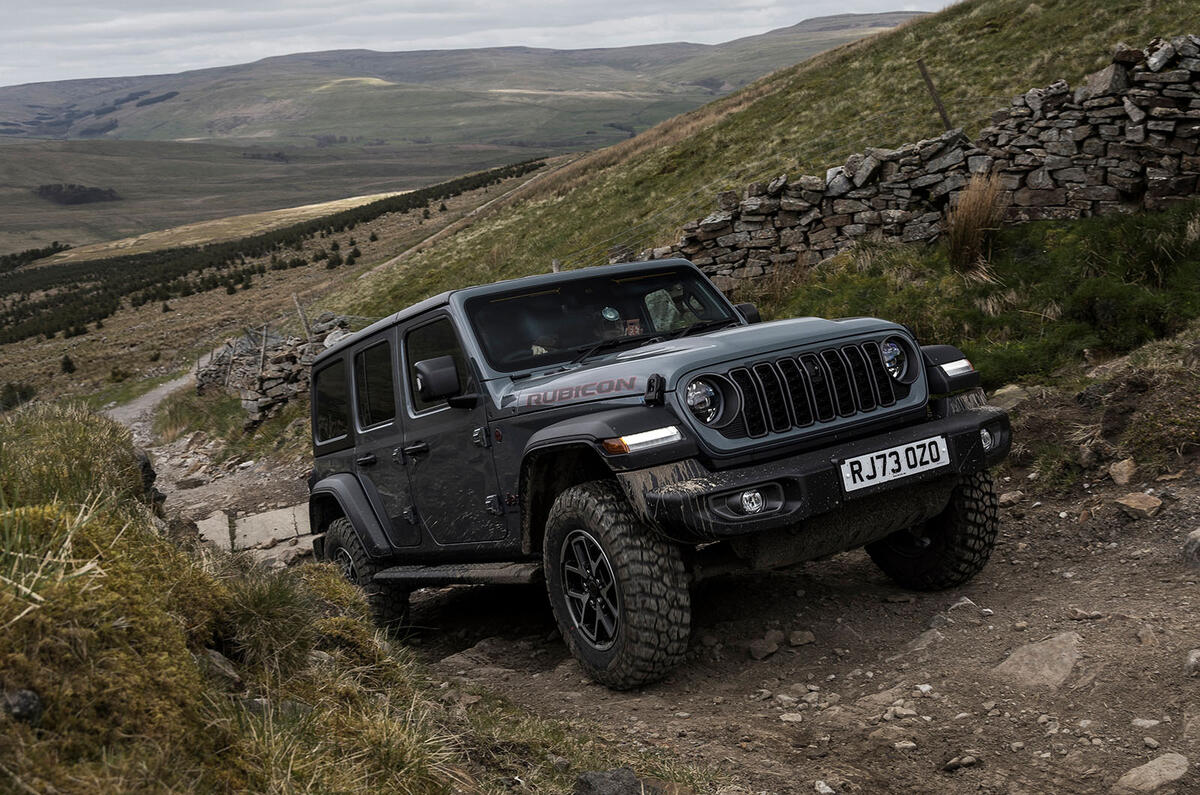
- Design9
- Interior8
- Performance7
- Ride & Handling8
- Costs5
Pros
Unstoppable off-road
Usable family-size interior
Well equipped as standard
Cons
Notable compromises on the road
Quite expensive
Just one engine option in the UK
Best for: Tackling the beaten track
That Jeep has carefully preserved the much-loved design, whose circular headlights, famously seven-slatted grille and strict geometry are still recognisable from the original Willys MB Jeep.
That the latest Wrangler remains one of the toughest, most capable off-roaders in the business comes as little surprise.
The interior is spacious and less cheaply and sparsely finished than you might think, and that goes hand in hand with the improved efficiency of the car’s downsized engines and better road manners (everything is relative, mind).
Of course, the Wrangler is still spectacular off the beaten track, especially in Rubicon trim with its ladder-frame, locking differentials, knobbly tyres, specialised articulating axles, underbody bracing and outstanding approach and departure angle statistics.
It isn’t as nice to live with every day as the Land Rover Defender, hence its second-place ranking. That’s partly down to on-road manners that are considerably less salubrious than those of its British rival, with far less accurate handling, a more hyperactive ride and ear-bashing levels of ‘refinement’.
Still, if you’re handy with a spanner, you can remove the Wrangler’s doors and sections of its roof for some wind-in-the-hair thrills.
Read our Jeep Wrangler review
Save money on a Jeep Wrangler with What Car?
Finance this car with Drivenfi
3. Toyota Land Cruiser
9
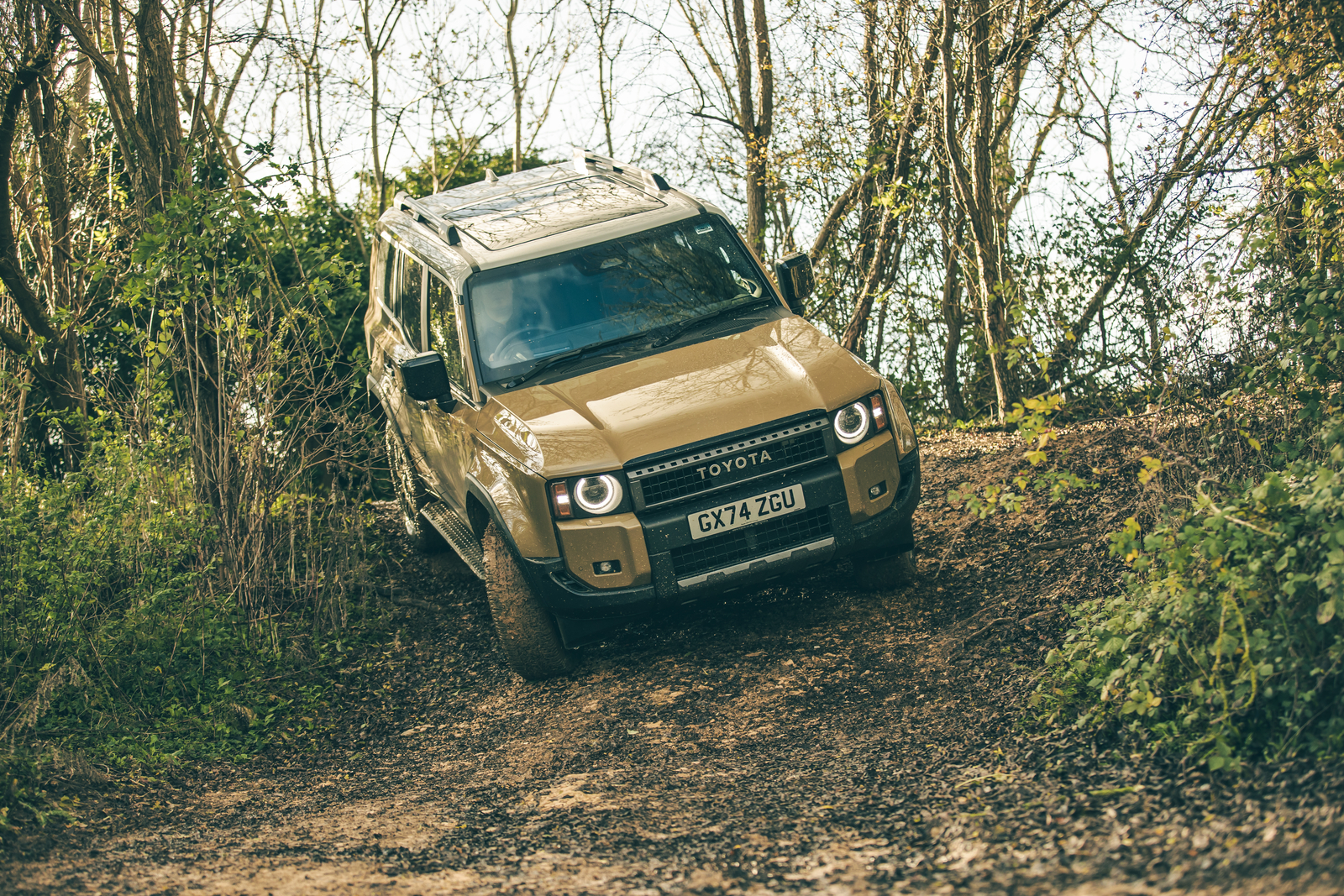
- Design9
- Interior9
- Performance7
- Ride & Handling7
- Costs6
Pros
Sharp looks
Reputation for reliability
Steering is light and fairly precise
Cons
Not that refined on road
Six cylinders would be smoother
Expensive
Best for: Reliability
Another icon, and it has historically been the workhorse of choice in the Australian outback, a place where breaking down simply won’t do.
Few cars offer quite the same duality of ability to go to Waitrose or on a desert expedition. Being a Toyota, it can be expected to return from both too.
For towing, wading and low-ratio, grind-it-out driving across truly inhospitable ground, the Toyota Land Cruiser scores very highly.
Basic-spec versions are reasonably affordable, while top-spec cars offer packed-out equipment rosters and seating for up to seven.
It might have sophisticated suspension, but don’t expect it to ride and handle like a monocoque SUV from Audi or Mercedes-Benz.
It’s a different beast: less sophisticated on the motorway but in another league in places where you might need a car like this, with a reputation for mechanical dependability and unbreakable toughness that’s jealously regarded by every one of its competitors.
Read our Toyota Land Cruiser review
Save money on a new Toyota Land Cruiser with What Car?
Finance this car with Drivenfi
Back to top
4. Ford Ranger Raptor
8
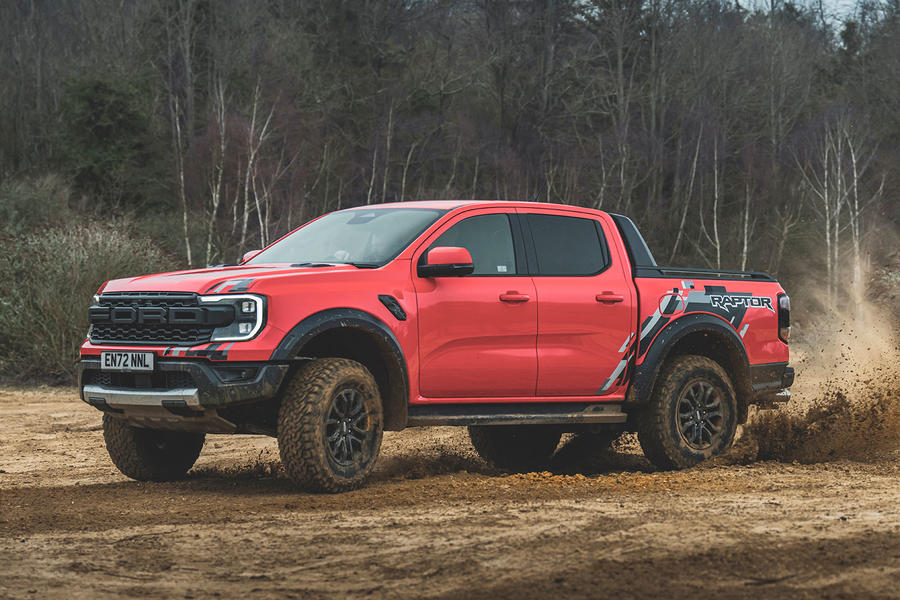
- Design8
- Interior8
- Performance8
- Ride & Handling8
- Costs8
Pros
Remarkable off-road
Capable of Baja-style jumps
Characterful twin-turbo V6
Cons
Enormous on UK roads
Payload too small for buyers to reclaim VAT
Vast proportions will limit appeal
Best for: Carrying cargo
The original Ford Ranger Raptor was something of a mixed bag, with a weedy 2.0-litre diesel four failing to match the talents of a chassis that fooled you into thinking you could tackle a Dakar Rally stage.
For UK drivers especially, it’s a niche proposition: it’s amazing in its element, but when it’s not, it doesn’t entertain like a great driver’s car really ought to.
Happily, the newer version of the hot pick-up truck retains its predecessor’s high-speed off-road prowess, but it now packs a little more muscle in the form of a 288bhp turbocharged 3.0-litre petrol V6.
There’s enough punch to surprise more than a few slumbering sports saloons, though, while the rortier engine note is much more pleasing to the ear than the old diesel’s drone.
As before, it’s the Ford’s uprated suspension that shines the brightest, with clever electronically controlled Fox ‘live-valve’ adaptive dampers that help to smooth any terrain that rolls under its wheels.
That means a supple and controlled ride on Tarmac, while in the rough stuff the Raptor can tackle ragged and torn terrain at speeds that would likely leave traditional 4x4s being swept into a carrier bag at the end of the route.
Read our Ford Ranger Raptor review
Save money on a new Ford Ranger with What Car?
Finance this car with Drivenfi
5. Range Rover
9
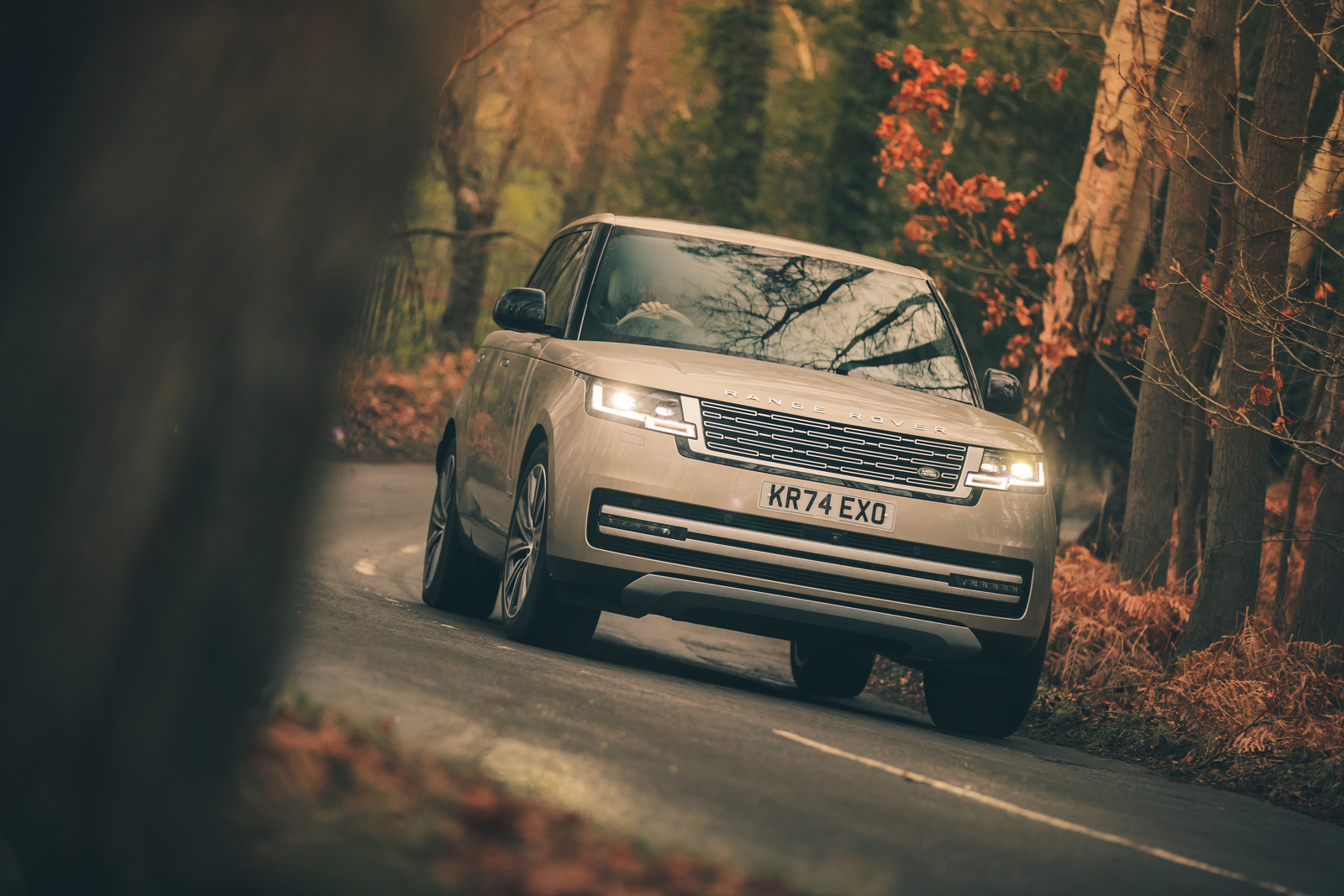
- Design8
- Interior9
- Performance9
- Ride & Handling10
- Costs5
Pros
Exceptional refinement and isolation
Unparalleled off-road ability
Pleasingly finished cabin
Cons
A pretty expensive piece of kit
Even the modest D350 tipped our scales at more than 2.6 tonnes
It takes an awful lot of stopping
Best for: Luxury off-roading
The Range Rover isn’t just one of the best luxury SUVs on sale; it also excels off-road.
Land Rover is like a supercar manufacturer when it comes to off-roading: it knows some owners won’t use the capability but its reputation depends on it being there.
Thanks to its air suspension, the Range Rover can be raised by 135mm for better ground clearance. It can also be lowered 50mm for easier entry and egress.
At its highest setting, the Range Rover stands 4mm taller than the Land Rover Defender and 55mm above the Mercedes-Benz G-Class. And it will wade up to 900mm in water.
Having excellent off-road ability is all well and good, but let’s be honest: most Range Rovers won’t ever leave Tarmac.
Read our Range Rover review
Save money on a new Range Rover with What Car?
Finance this car with Drivenfi
Back to top
6. Mercedes-Benz G-Class
8
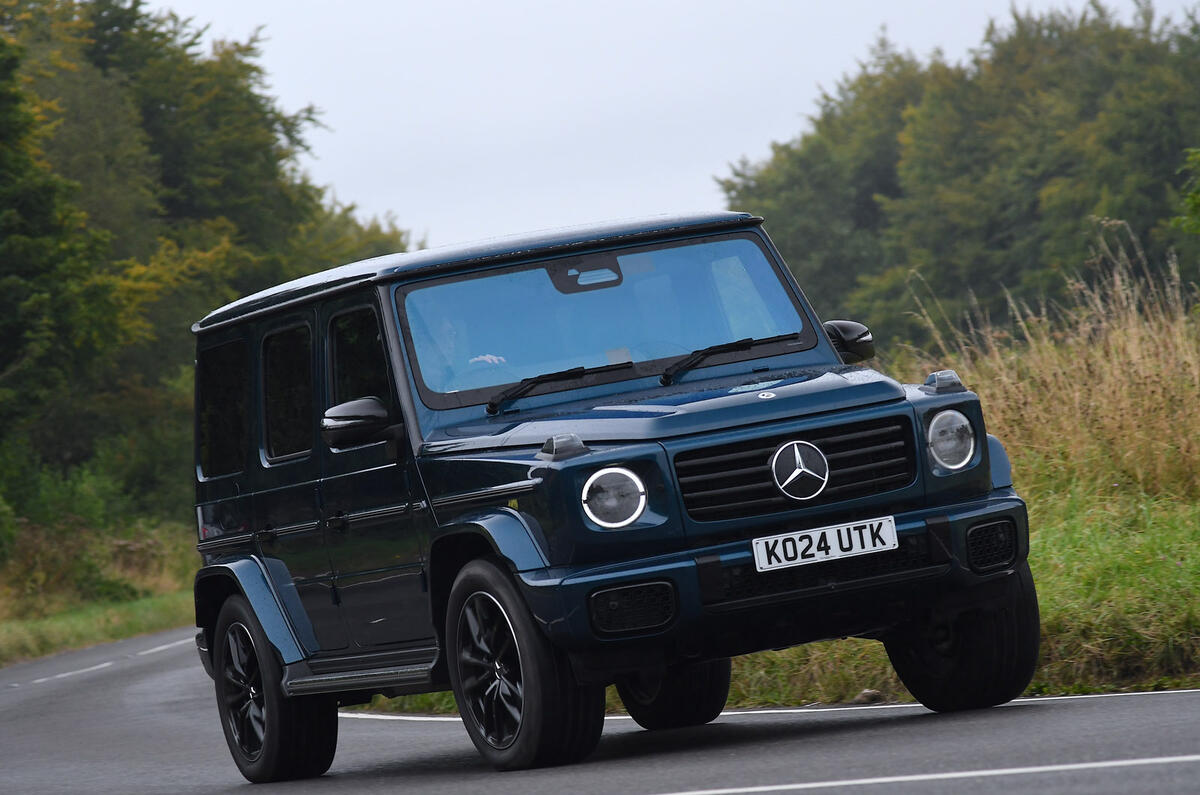
- Design10
- Interior8
- Performance8
- Ride & Handling8
- Costs6
Pros
First-class mechanical refinement
Smooth and quiet diesel engine really suits it
Very capable off road
Cons
Not really a rational purchase…
Feels its size on narrower roads
Very expensive
Best for: Style
The best off-roaders tend to stick around, and the G-Wagen (technically now the G-Class, but forgive us the nostalgia) matches the Land Cruiser and Defender for cultural longevity.
You can dismiss its ‘tough military vehicle’ affectations as gimmicks, but you would be ignoring the combined effect: making this feel like a very special car and a real event to drive and be in.
This Mercedes recently received an update, but underneath you will still find a ladder-frame chassis, although the front suspension is now fully independent and the whole set-up was part-developed by AMG.
It boasts three locking differentials, improved ground clearance and the same immense range of off-road abilities as before, but it’s now also one that handles predictably and, at times, even quite enjoyably on the road.
However, Mercedes has also been cute with the period details, so the G retains the old car’s traditional door handles with push-button locks, while the catches themselves are similar, meaning the doors close with the same retro clack.
As well as the already powerful G450d (365bhp) and G500 (447bhp), there’s the range-topping AMG G63. It gets 583bhp and will hit 0-62mph in 4.4sec. Perfect – if you’ve got the budget of a Premier League footballer.
Read our Mercedes-Benz G-Class review
Save money on a Mercedes-Benz G-Class with What Car?
Finance this car with Drivenfi
7. Lamborghini Huracán Sterrato
9
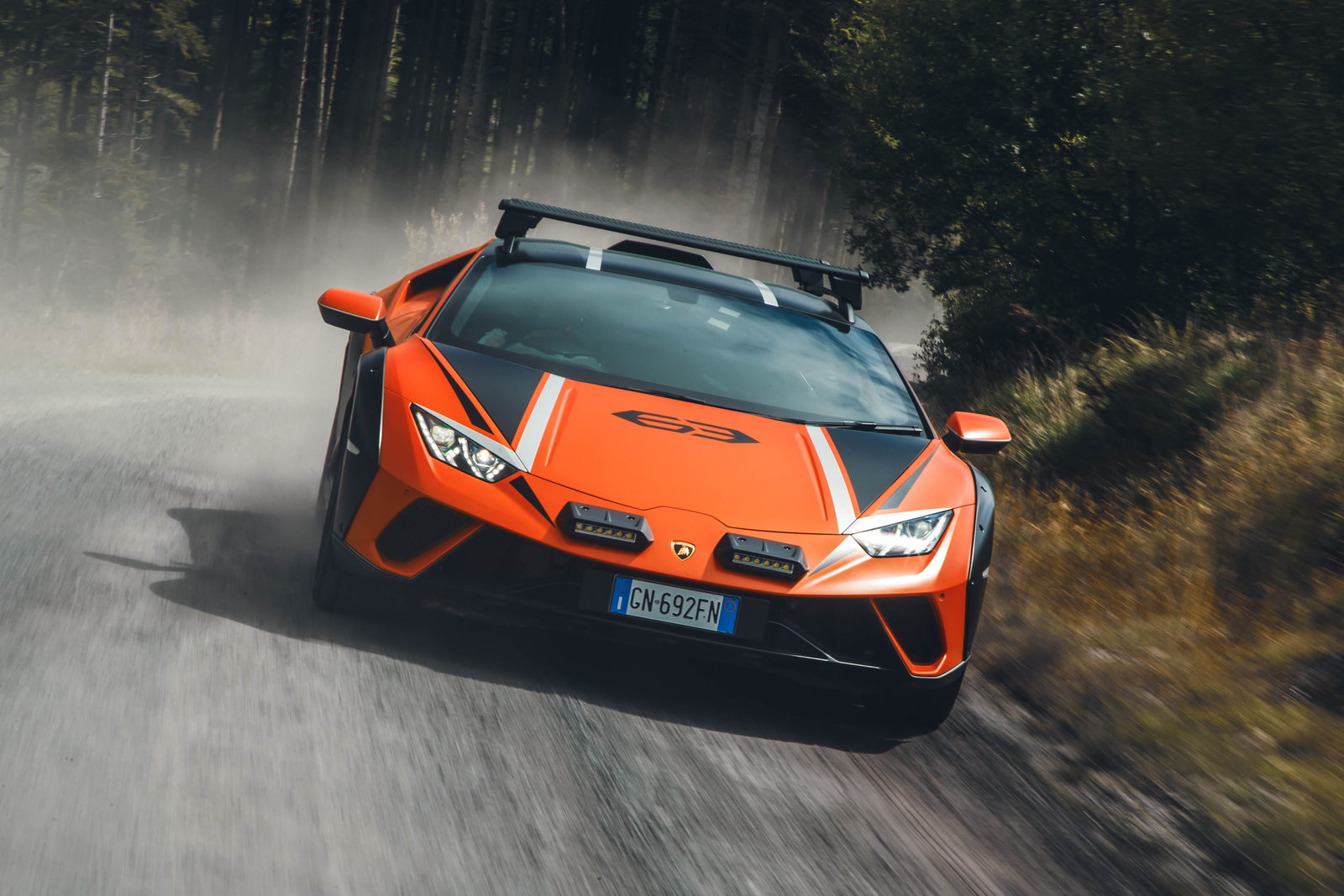
- Design8
- Interior7
- Performance9
- Ride & Handling9
- Costs7
Pros
Excellent grip and body control
Theatrical presence
Sensational, atmospheric V10 engine
Cons
Apocalypse-ready looks might be over the top for some
Cabin ergonomics are challenging
Almost no storage
Best for: Performance
The Lamborghini Huracán Sterrato is probably the most entertaining variant of the company’s staple supercar. That’s good news, because it’s the last Huracán we will see.
The Sterrato is a fitting finale for the Huracán. Lambo’s junior supercar has always been a congenital entertainer, never more so than in this form.
Based on the regular four-wheel-drive Huracán coupé, the Sterrato stands 44mm higher and gets 25% softer springs, plus an additional 35% suspension travel at the front and 25% more at the rear. Its front track is 30mm wider, its rear track 34mm wider and its wheelbase 9mm longer.
Its rugged exterior cladding means it’s not exactly subtle, and this is exaggerated by its 5.2-litre, naturally aspirated V10 engine – also the last of its kind that Lamborghini will make.
Thanks to its off-road tyres, the Sterrato has a relaxed, easy and absorbent ride that’s capable of tackling most surfaces with an extraordinarily natural feel. Anybody would be able to take this supercar off-road, such is its capability.
It’s just as good on the road too, with an immaculate ride and communicative steering.
Read our Lamborghini Huracán Sterrato review
Save money on a new Lamborghini with What Car?
Finance this car with Drivenfi
Back to top
8. Dacia Duster 4×4
9
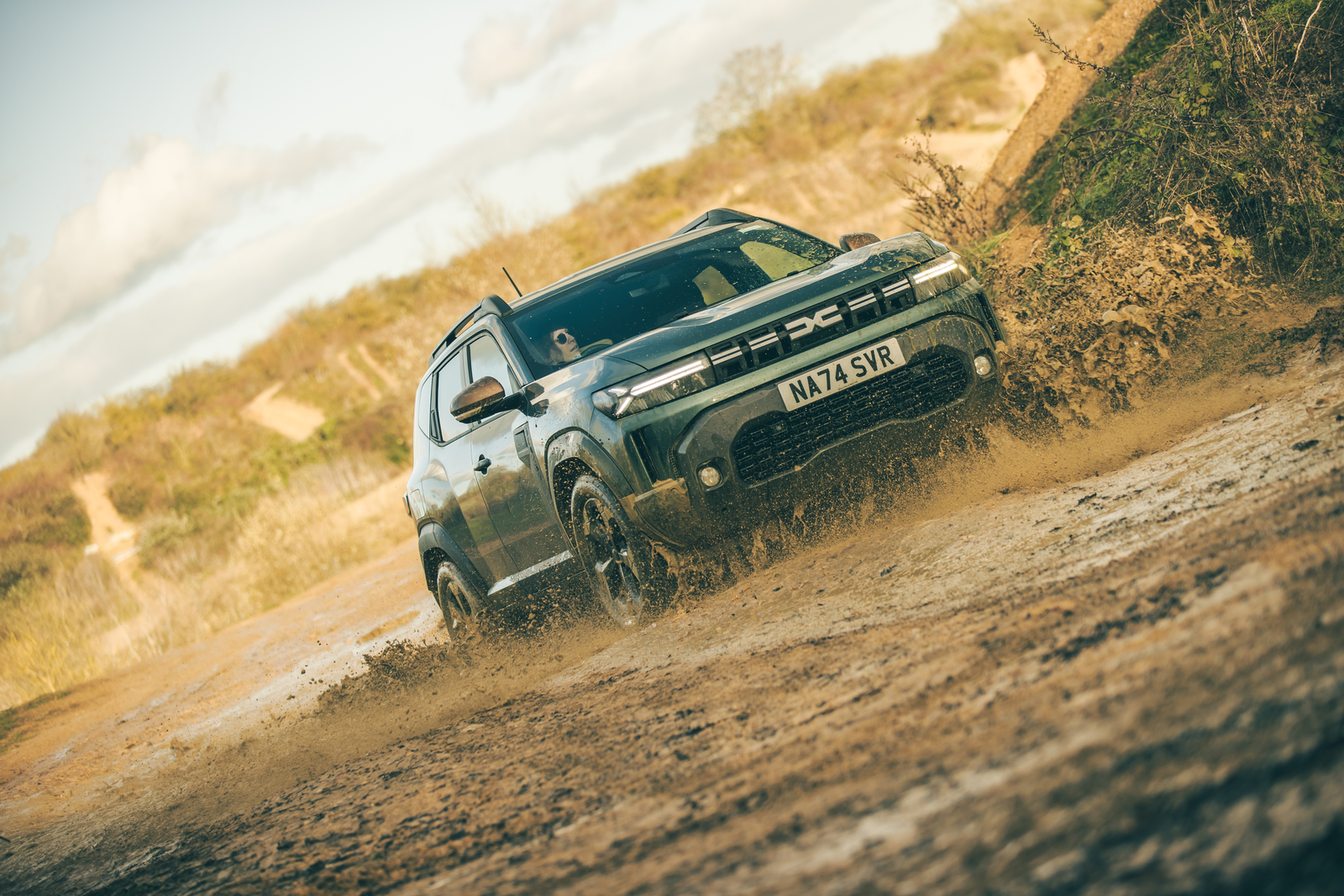
- Design8
- Interior8
- Performance7
- Ride & Handling8
- Costs10
Pros
Remains excellent value for money
Has an easy character and pleasant driveability
More spacious than before
Cons
Interior tech is a little fussy
Still feels a bit cheap in places
The diesel option has been axed
Best for: Value
For heading off the beaten track on a tight budget, the Dacia Duster 4×4 still takes some beating. It’s not as cheap as it was (there’s no entry-level Access version now), but it’s still cracking value regardless of vehicle type.
Dacia’s budget-friendly crossover is now more refined, more drivable, more efficient where it matters and simply nicer to be in and around, despite prices having barely changed.
In terms of off-road kit, the Duster isn’t as comprehensively specced as others in this list, but you get enough to be able to tackle the wilderness with confidence.
The trick four-wheel drive system allows you to choose front-wheel drive for the road, while an Auto mode quickly engages the rear axle when it detects wheelspin; Lock mode sets the torque split at 50/50 for the best off-road traction.
There’s also a shorter first gear for climbing steep slopes plus hill descent control for scrabbling down the other side.
Yet the Duster’s best off-road attributes are decent ground clearance and a relatively low kerb weight, allowing it to tiptoe over some obstacles that would sink heavyweight rivals.
Read our Dacia Duster 4×4 review
Save money on a Dacia Duster with What Car?
Finance this car with Drivenfi
9. Land Rover Discovery
8
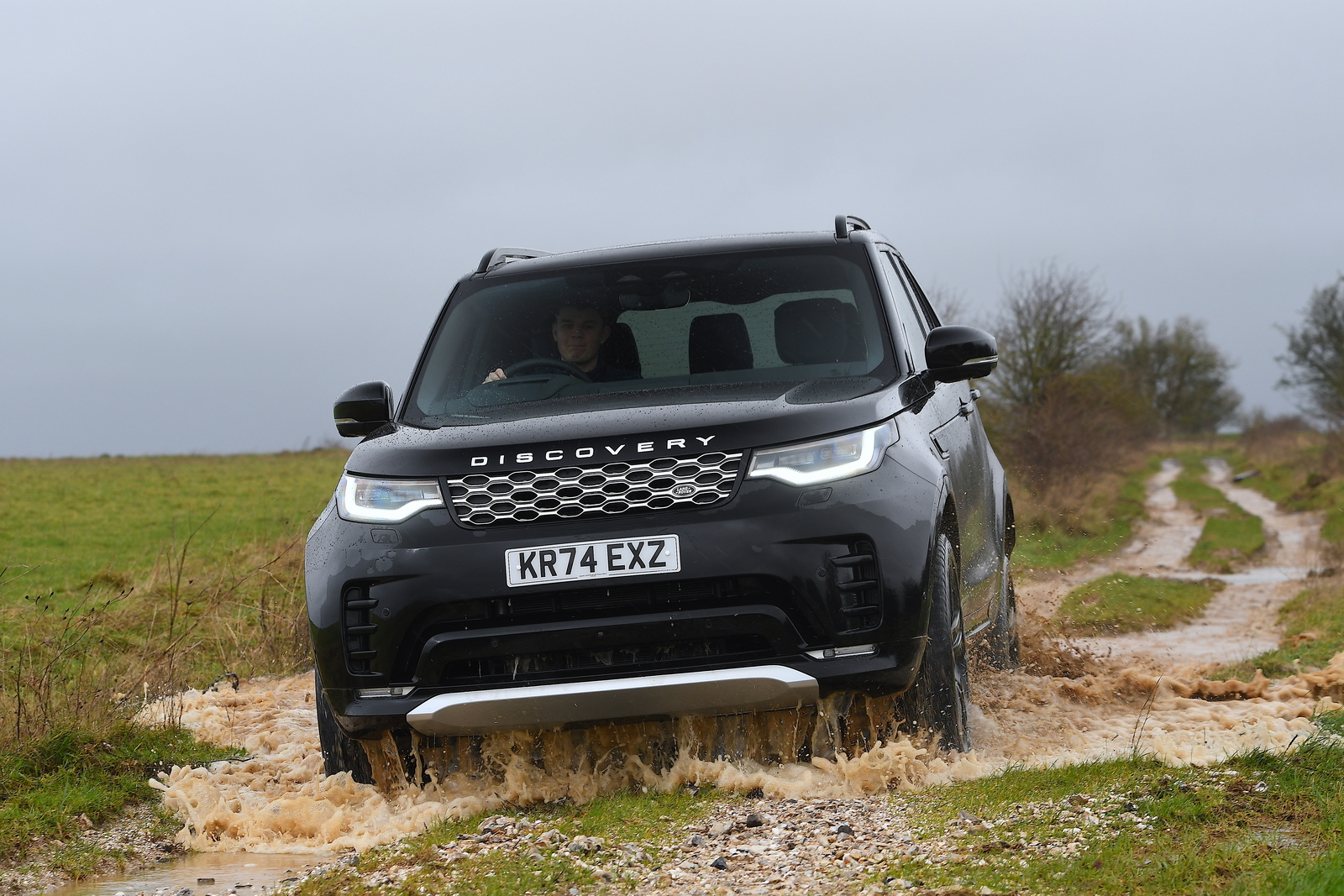
- Design7
- Interior8
- Performance8
- Ride & Handling9
- Costs8
Pros
Terrific, laid-back drivability
Genuine seven-seat usability
Off-road prowess
Cons
Rivals are more efficient
Rivals better off-road
Rear styling has never grown on us
Best for: People carrying
You might wonder why the fifth-generation Land Rover Discovery doesn’t sit higher up this list, even given the calibre of the cars above.
The classy Discovery now lives in the shadow of the Defender but is still a thoroughly enjoyable and likeable SUV.
It is, in the grand scheme, a terrifically competent off-roader, but it matches that with wonderful road manners for an all-round package with which none of the others can quite compete. Everywhere the Discovery goes, it does so with a calm assurance.
It isn’t, however, quite as gritty, grippy or tenacious as some cars when the going gets really tough. That said, few are as easy and stress-free to drive in the rough stuff: the brand’s advanced Terrain Response system does much of the hard work, meaning all you need do is steer the Discovery up hill and down dale.
A facelift for the 2021 model year brought new six-cylinder engines of both the petrol- and diesel-sipping varieties, as well as updated suspension and some fresh interior features.
It also kept a likeable and very versatile car high in our estimations – although the need for seven seats means there’s no room for the battery and motor required to deliver a plug-in hybrid version.
Read our Land Rover Discovery review
Save money on a Land Rover Discovery with What Car?
Finance this car with Drivenfi
Back to top
10. Ineos Grenadier
7
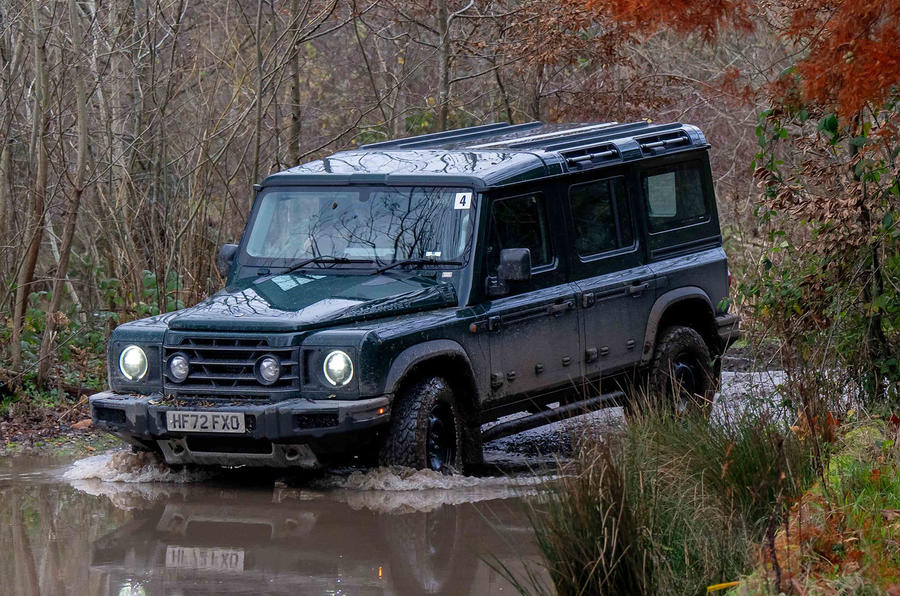
- Design8
- Interior7
- Performance7
- Ride & Handling5
- Costs6
Pros
Strong and interesting powertrain
Profound off-road capability
A classic Defender in spirit but has its own character
Cons
Steering is poor on road
Driving ergonomics less than ideal
High asking price
Best for: The alternative choice
The Grenadier is up with the best when it comes to conquering the wilderness, where its abilities in the rough match those of the British classic that has so clearly influenced its design.
Despite certain shortcomings, many will love this car for its undoubted ruggedness and adaptability. Broader appeal might remain elusive, however.
In keeping with traditional 4×4 mechanical philosophy, it features a ladder-frame chassis and a pair of live axles. It uses a choice of BMW engines (a choice of 3.0-litre six-cylinder petrol or diesel units), a ZF eight-speed automatic gearbox and a Tremac dual-range transfer ‘box for proper rock-crawling ability.
Factor in ground clearance just shy of 260mm, a trio of differential locks and approach and departure angles of 35.9deg and the Grenadier is as unstoppable in the rough as you would expect, barely breaking a sweat as it scrabbles up and over challenging terra firma.
Off-road ability and a no-nonsense utility underpin the car’s character, but there’s also a softer side to the Grenadier.
Its interior is roomy and melds thoughtful ease of use with just enough luxury to appeal to the premium badge brigade, while on the road it’s closer in spirit to the G-Wagen than the latest Defender: capable and easy to drive but lacking the dynamic polish and refinement to be truly at home.




